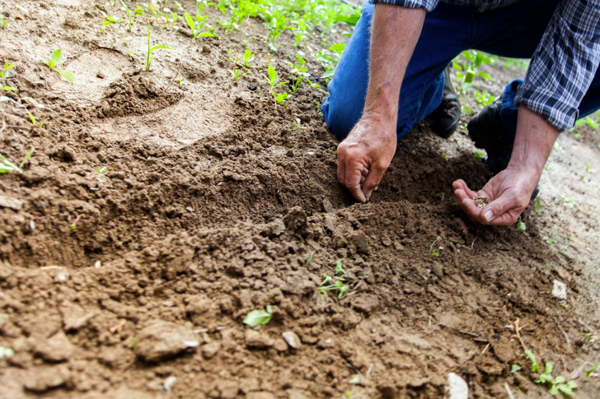
Photo courtesy of Binyamin Mellish / Pexels
There’s that phrase “regenerative farming” again. It seems to be a trending phrase these days. What is it? What does it mean?
Regenerative farming is a direct effort that focuses on rebuilding soils and recreating biodiversity within soils. It is the polar opposite of big agri-business.
Several generations have passed since farming methods morphed into chemically applied improvements instead of the rich, generational farming practices. Enough time has passed that these improvements, which started just after WWII, can be measurably assessed for profitability, nutritional variants and environmental impacts. Many studies have done as much.
A scientific, logical assessment and the charted numbers, devoid of emotional responses, will show an increase in profits while decreasing nutritional value of the food produced as well as a death sentence on the native species that once balanced our farmland. With this data, individuals can make choices that affect the individual backyard garden, the couple-of-acre mini-farm, the larger farm entity and the corporate farm: Yes, the ability to choose what is important is available to you whether you farm, garden or buy food.
Regenerative work is an approach to growing food that honors the natural balance of the soil while recognizing the interconnectedness of soil with water and air: an earth balance. It starts with focusing on rebuilding topsoil. As rich topsoil develops, carbon in the atmosphere gets caught in the soil. Healthy soil acts as a filtration system, so nearby water sources improve in water quality.
I am a minimal-effort gardener. Happily for me, the regenerative farming practices do not include disturbing the soil with regular tillage. Regenerative farming allows the microorganisms in the soil to develop their own networks in the ground.
Costs for fertilizer are reduced as regenerative farming rebuilds the natural nutrients in the soil. A well-balanced topsoil is rich in naturally occurring nutrients, which feed the crops. The plants are able to incorporate these nutrients into their production. There are many studies that show a higher, usable nutritional level from food produced from naturally made “fertilizers.” All vegetables are not created with equal nutritional value.
Where do you start?
Compost.
The basic rules of compost are pretty simple. Keep meat and bones out of it. The compost pile should consist of a balance of “greens” and “browns.” I think of it as the soggy garbage, newsprint paper and clean yard waste. I keep branches out of it. You want to turn the pile over and stir things up occasionally. I am very simple with this and admit to it possibly being more effective with more organized effort.
On John R. Rice Boulevard is the Lane Agri-Park. The Rutherford County Master Gardeners have demo areas there, including a superb example of a three-step composting process located by the gardens.
There are composting products to contain the process if you do not want a pile in the yard. The bottom line is, just do it. Minimize Mt. Trashmore a little by returning your garbage to the soil. You will minimize it even more if you don’t bag your leaves and let them return to the soil. Keep pesticides off your grass and put the grass clippings in the compost pile. I even add my shredded mail to it.
Every effort helps—helps reduce waste, helps improve the soil which then helps the air and water. We, humans, are a part of this cycle. It is important that we should enhance the natural process which was set up by someone or something smarter than us. Step up and do your part.













